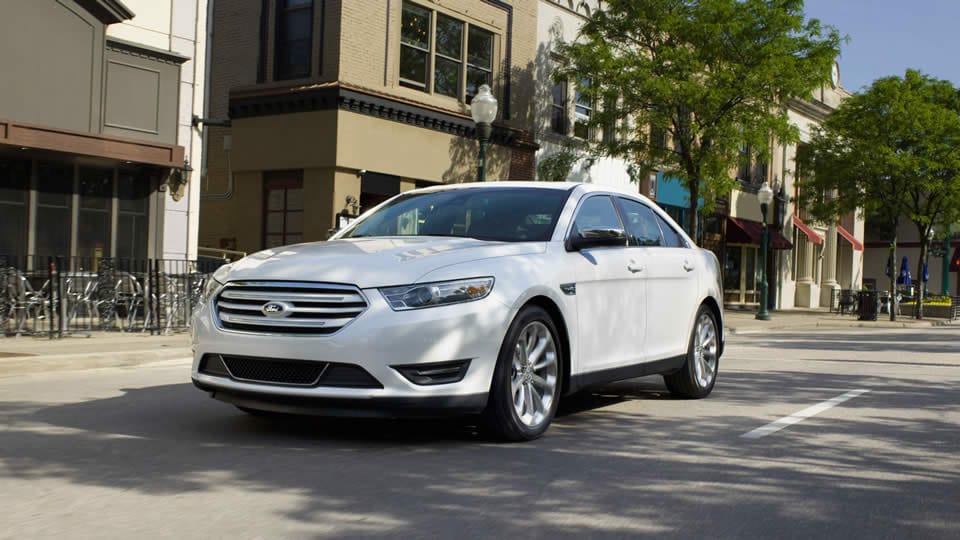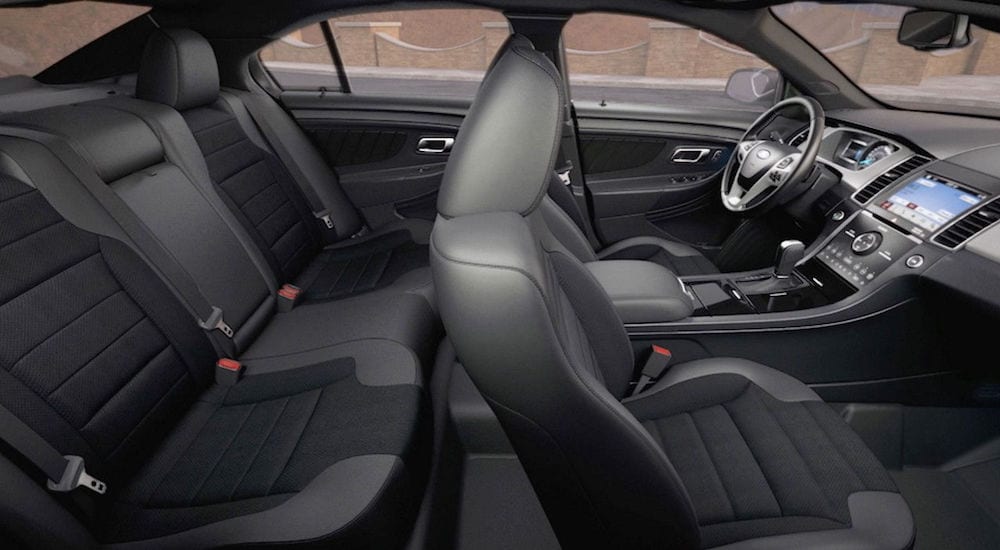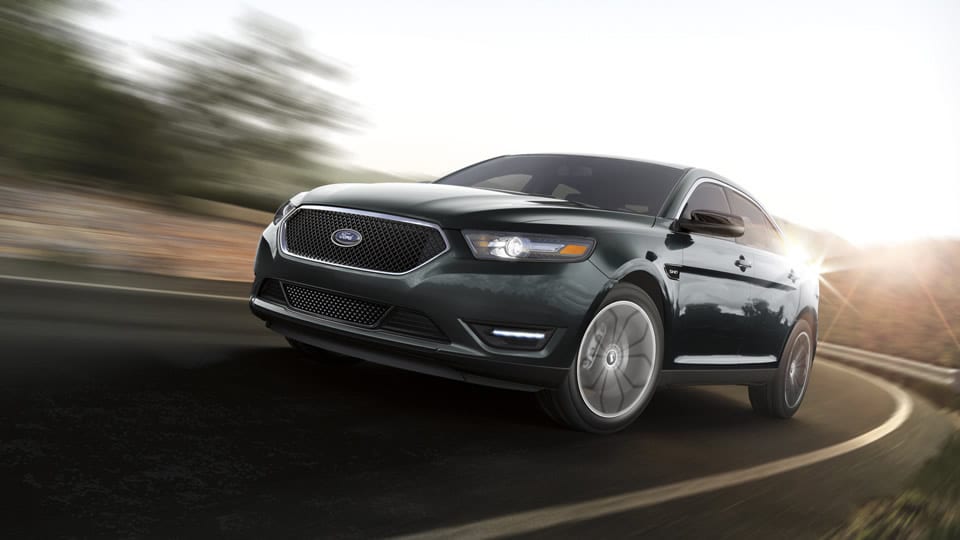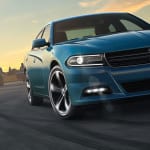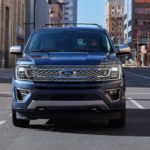Drivers of a certain age will never forget the Ford Taurus. That’s because the Taurus was everywhere. American streets and highways were a continuous stream of Tauruses punctuated with the occasional Honda Accord, Toyota Corolla, and Chevy Cavalier. Ford dealers could barely keep up with the intense demand.
Why are we revisiting the Ford Taurus now? Wasn’t it discontinued several decades ago? Actually, no. The Ford Taurus was discontinued in 2019, which means you can still find examples that qualify for Ford’s Certified Pre-Owned program available today. This venerable vehicle is still highly sought after on used car lots, and in the Middle East, the new 2023 Ford Taurus has just hit the market. Sure, it’s basically the Ford Mondeo from the Chinese market, but for those who wonder what might’ve been had the Taurus made it this far, it hits the nail on the head.
There’s something a little jarring about seeing a Taurus with a massive 13.2-inch infotainment system, but sales of the new Taurus are booming in the Middle Eastern markets, making it a huge seller in recent years. In honor of the Taurus’s Phoenix-like rebirth in the Middle Eastern markets, let’s take a look back at the sedan that saved the Ford brand, only to succumb to the SUV boom…but only in America.
The Story of How the Ford Taurus Came to Be
To understand the popularity of the Ford Taurus, it’s best to step back into the automotive world into which it was introduced. The time is the mid-1980s. Many drivers are still shaken from the oil crises of 1973 and 1979. Sure, it’s easy to get fuel now, but who knows when another embargo might strike? Manufacturers have followed guidelines to make their cars more economical, which has taken the classic big-block V8 models out of the picture. Smaller cars like the Honda Accord, Toyota Camry, and Mazda 626, with their tiny gasoline-sipping engines and lightning-quick handling, are immensely popular.
In this environment, Ford needed an appealing yet efficient car that could slot between the compact Tempo and the full-size Crown Victoria. What the manufacturer wanted was a vehicle that could replace the Ford LTD, compete with the Chrysler K-cars, and be more attractive to American drivers than Japanese or European imports.
The first generation Ford Taurus debuted in 1986 and was the result of a combined strategic effort from Ford’s interior and exterior teams. Team Taurus, led by Lewis Veraldi, vice president of car development at Ford, realized that a best-in-class sedan had to have a cohesive design in every possible aspect. That might seem like common sense, but back then, it was a relatively new concept.
Building the Perfect Sedan
The amount of testing Team Taurus completed in order to create the ultimate design was unheard of at the time. Early experiments involved swapping the suspension of a Crown Victoria with an Opel Senator to find out what test drivers would think about the ride of a bigger body with a tighter suspension and vice versa. From this, Team Taurus learned that drivers felt that a vehicle’s body styling needs to match the way it handles, forcing the team to find a tangible way to create a style and feel that would appeal to the driving public.
Surveys were conducted with actual consumers. How did they use their vehicles? What is the perfect amount of interior space? Ford learned that many drivers were family-oriented baby boomers who were looking for something stylish and economical. They wanted to look good and feel good about driving with their children on board.
Remember, the first generation Ford Taurus debuted in 1986. Veraldi and his team didn’t receive this data by sending out a Survey Monkey link. They had to actually speak to customers to gain this insight. They had to find out what real drivers liked and hated about their current cars in order to understand where all of their opportunities existed. The goal was to create a vehicle that surpassed expectations in every way.
From the handling to a curving dashboard with an easy-to-reach, intuitive instrument panel, each detail was created to provide customers with a best-in-class experience. And it worked. In just three years, at the close of the 1989 model year, the Ford Taurus had sold a million models.
All For SHO
And then there was the Ford Taurus SHO, the likes of which we may never see again. “SHO” stood for “Super High Output” and was the result of a collaboration in which a 3.0L “Shogun” V6 engine from Yamaha was dropped into a Ford Taurus. The first generation of SHO enjoyed 220 hp and 200 lb-ft of torque, a top speed of 143 mph, and could make the trip from 0-60 mph in just 6.7 seconds. The SHO also offered a finely tuned suspension, dual exhausts, and sports seats with extra bolstering.
The idea was to offer a vehicle with the spirit of a European sports sedan to the American public on a middle-class family budget. This was 1989, and the idea of having this much power in a vehicle that was suitable for the family and the office, all at a reasonable price, was an easy sell. Ford sold 15,519 SHOs in the first year of production, each with a reasonable MSRP of $19,739.
The SHO was supposed to be a high-performance version of the Taurus that would be produced for a limited time, but by the third generation, it was clear that this model was very much an important part of the lineup. The SHO, which was by then sporting a 3.5L V6 engine good for 365 hp and 350 lb-ft of torque, made its final appearance alongside the rest of its Taurus brethren in 2019.
But Things Got Weird
It’s strangely difficult to put a finger on where the Taurus pivoted away from being a best-selling vehicle that had the interests of every sedan driver in mind. Some speculate that the Taurus’s brief absence between 2006 and 2008 was enough time for drivers to find something that better suited their needs. Others feel that Ford got too complacent with the Taurus and allowed it to rest on its laurels while the manufacturer threw all of its resources into SUVs. In fact, Ford’s own commentary on the issue indicates that this theory is at least partially correct, as Ford eventually eliminated all sedans from its lineup. Barring the Mustang, Ford strictly produces SUVs and trucks today.
But that is just here in the US. International markets continue to enjoy the Ford Taurus, either in its new Mondeo-derived format or as a continuation of the model we once loved so dearly here in the States.
Will the Taurus ever return Stateside? In many ways, it would kind of be fun to see what a new Taurus would look like. If Ford applied the same amount of research done when the model was first released, we might learn some very interesting truths about American driving habits! Still, with electrified vehicles at the forefront of Ford’s current strategy, any plans for a new Taurus will likely be shelved. Though we probably shouldn’t entirely discount the possibility of seeing an electrified Taurus someday…
